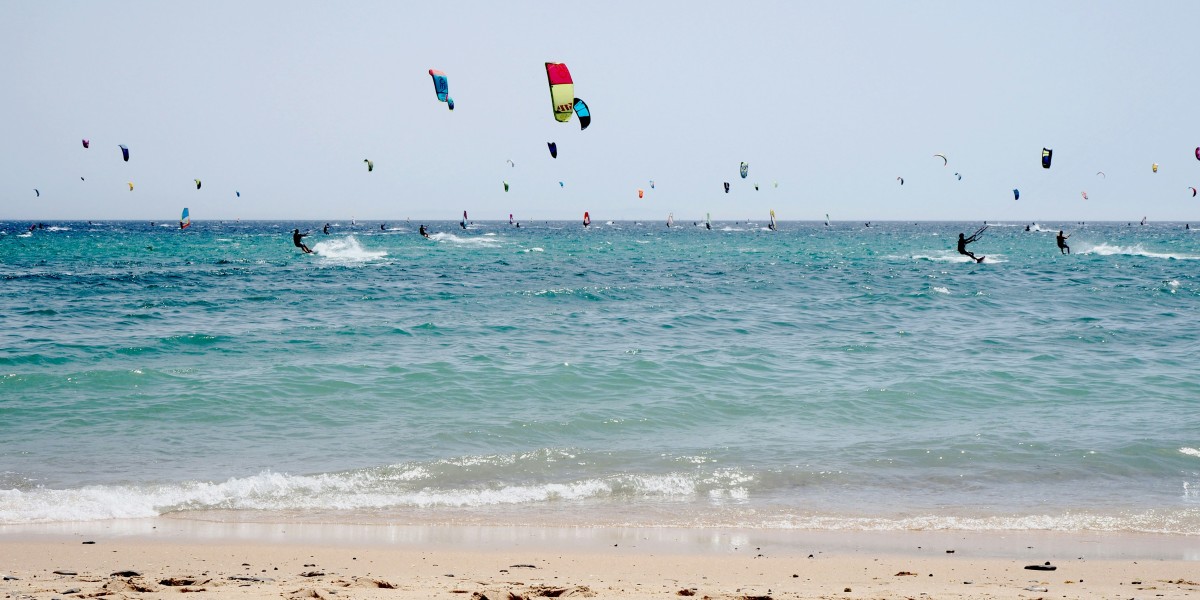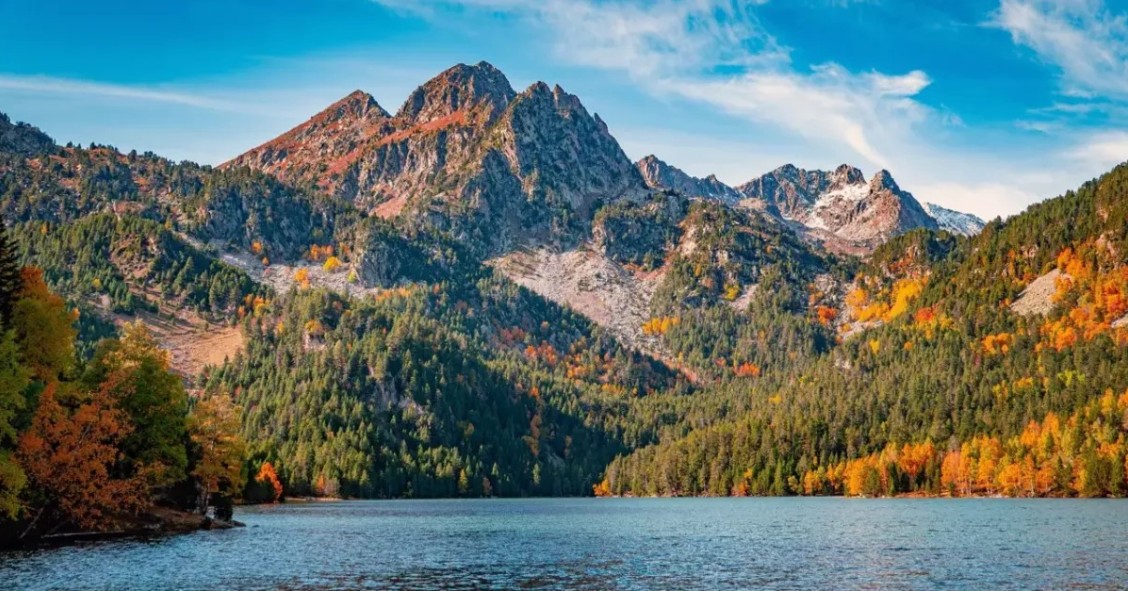
For authentic alternatives to Spain’s tourist resorts, think compact old towns, protected coasts and mountain parks with capped development. Shoulder‑season, mid‑week trips and rail or bus links usually keep things calmer and cheaper. Explore beaches backed by dunes or cliffs, towns with pedestrian cores, and destinations a touch further from major airports tend to stay relaxed.
Coastal alternatives in mainland Spain beyond the resort strips
The Atlantic and Mediterranean both hide stretches where fishing towns, dunes and natural parks still set the pace. Picture compact old quarters, seafood markets and big skies, with beaches that breathe and evenings that linger on a plaza bench.

Costa de la Luz, Cádiz–Huelva
Wind-brushed Atlantic sands, pine forests and long, low horizons define this corner. Base yourself in Zahara de los Atunes, Conil de la Frontera or in one of Spain's most charming little-known coastal towns, El Rompido, for wide beaches, tuna bars and lazy sunsets. History and nature sit side by side at the preserved ruins of Baelo Claudia by the vast Bolonia Beach, and in the marshes of Doñana National Park, where birdlife steals the show.
Tarifa’s levante winds can be punchy, so plan beach time early or stick to coves near Bologna and Zahara on breezier days. Jerez and Seville airports make access simple, and parking is easier than on the Med side.
- Holiday rentals in Costa de la Luz
- Long-term rentals in Costa de la Luz
- Property for sale in Costa del la Luz
Cabo de Gata–Níjar Natural Park, Almería
A protected volcanic coast with pale coves and whitewashed villages keeps things low-key. Almeria's most picturesque towns, such as San José, Las Negras and Agua Amarga, work as bases for snorkelling, kayaking and coastal hikes amid cactus and crags. The light here is startling, and the beaches feel wild without being remote and include the world's most beautiful beach, according to the New York Times.
Heat and water scarcity shape the rhythm, so plan shade, carry plenty of water and respect any beach-access shuttles in high season. Some tracks are unpaved and better suited to sturdy shoes than flip-flops.

Rías Baixas and Costa da Morte, Galicia
Sheltered rías, granite villages and Albariño wine routes set a slower rhythm. Combarro charms with its seafront wooden granaries called hórreos. Muros keeps its working-harbour feel, and lighthouse stops along the Costa da Morte add drama. The Cíes Islands are a standout day trip with capped visitor numbers that keep beaches pristine.
Expect cooler seas and changeable weather, which is part of the appeal when the south is baking. Base near Pontevedra or Santiago de Compostela for road and bus links, and book Cíes permits in advance on peak dates. Seafood markets and pulpeiras make lunch easy and brilliant value.
Asturias and Cantabria’s Green Coast
Cliff-backed coves, grassy headlands and stone towns give this coast a lived-in feel. Asturias's most charming coastal villages, like Llanes, Ribadesella and Comillas, balance beach days with handsome streets and good sidra bars. Inland, the Picos de Europa rise fast for day hikes and viewpoints that feel a world away.
The narrow-gauge FEVE trains and reliable buses stitch the coast together, and tides matter if you’re aiming for pocket beaches. Summer parking can be tight near popular spots, so an early roll or staying within walking distance makes life easier.
Island escapes beyond the usual resorts
Swap high-rise seafronts for nature-rich islands with real village life, proper markets and starry nights. Laurel forests, dry‑stone lanes and coves where the loudest thing is the surf. Pick compact bases, make the most of the buses and ferries, and save the car for rural stretches.

La Palma and La Gomera, Canary Islands
La Palma is all ridge walks and stargazing, with Caldera de Taburiente National Park and the observatory at Roque de los Muchachos. La Gomera centres on Garajonay National Park’s laurel forests and terrace‑lined valleys. Evenings unfold quietly in Valle Gran Rey or San Sebastián de La Gomera over mojo and local goat cheeses.
Flights usually connect via Tenerife Norte or Gran Canaria, or you can hop ferries between islands. Expect microclimates and steep terrain: layers, good footwear and unhurried driving make all the difference. Try almogrote on La Gomera and bienmesabe on La Palma for a taste of the islands’ pantry.
North Menorca and inland Mallorca towns
The north of Menorca is quieter, with russet-sand coves like Algaiarens and Cavalleria, dry‑stone walls and photogenic lighthouses. The island offers plenty of things to do for kids, couples and on rainy days. Walk sections of the historic Camí de Cavalls, snorkel over clear seagrass meadows, and keep evenings simple in Fornells over caldereta and harbour views. Inland on Mallorca, agroturismos around Pollença, Sineu, and Santanyí give bucolic bases with weekly markets and slow dinners under carob trees. Unique things to do in Mallorca take you away from the chichi resorts.
The TIB bus network is decent in season, slimmer off‑season, so short car hires can be handy for trailheads and remote calas. Swim with care at unlifeguarded beaches, pack shade and water, and respect access rules on rural tracks.

Tenerife’s Anaga and La Orotava Valley
Northeast Tenerife is a world away from the resort belts and one of the wisest choices when looking for authentic alternatives in Tenerife. Parque Rural de Anaga folds ancient laurel forests, cliffside hamlets like Taganana, and black‑sand coves such as Benijo into a single, wild corner. The La Orotava historic quarter adds stately houses and shaded patios, with homely guachinches pouring local wine in the hills.
TITSA buses reach key trailheads, but a car helps for early starts and quieter routes. Parking is limited at popular miradores, so arrive off‑peak.
Inland Spain for heritage towns and slow travel
Inland Spain rewards patience: stone‑built centres, long lunches and landscapes that open out for miles. Trains and regional buses reach the main hubs, while a car is helpful for villages, viewpoints and national parks. Cooler spring and autumn days suit wandering medieval lanes and lingering over a menú del día.

Extremadura's ancient towns and nature
The Spanish Unesco-protected old town of Cáceres feels cinematic after dusk, with stork nests on towers and quiet lanes that invite an amble. Trujillo revolves around its grand plaza and conquistador palaces, while the surrounding oak pastures set the scene for jamón routes and birdwatching in Monfragüe National Park.
Access to the region of Extremadura works well via Madrid for rail and buses to Cáceres. A car is handy for Guadalupe and smaller hamlets. Summers run hot, so spring wildflowers and clear autumn light are the sweet spot. Parking sits outside the old walls, and market days keep things lively without the rush.
Salamanca, León and Ribera del Duero villages
Golden stone glows at dusk in Salamanca, where the Plaza Mayor hums and student bars spin out generous pinchos. León pairs a Gothic cathedral of stained glass with the Barrio Húmedo for tapas crawls. Wine‑town bases near Peñafiel open doors to Ribera del Duero bodegas.
Alvia trains tie the region together. Wine tastings usually need a booking, and a designated driver keeps things sensible. Expect real seasons: frosty mornings in winter and warm summer afternoons, with long, sociable evenings once the heat eases.

Renaissance Úbeda and Baeza
Twin hill towns Úbeda and Baeza in Jaén showcase Renaissance palaces by Vandelvira and are arguably one of Spain's most underrated UNESCO World Heritage Sites. The ancient towns are framed by olive groves that roll to the horizon. Courtyards stay cool, workshops fire traditional ceramics, and tastings introduce superb local EVOO, some of Spain's most delicious olive oil.
Road links via Jaén and Granada make them easy to pair, with short hops into Sierra Mágina for a leg‑stretch. Evenings lean tranquil around mellow plazas, and winter brings crisp air and clear views across the groves.
Pyrenees and the Picos bases
Aínsa presents a handsome medieval square and easy access to rivers and foothill paths. Torla–Ordesa serves as the classic gateway to Ordesa y Monte Perdido National Park, where shuttle buses manage summer traffic and trails climb to balcones and beech forests. Visit one of Spain's must-see UNESCO World Heritage Sites, Mont Perdu, and step into France for a day. In the west, Potes, officially one of Spain's most beautiful villages, anchors visits into the limestone drama of the Picos de Europa.
Mountain roads are winding and views distract, so unhurried driving pays off. Plates come hearty up here, with stews, cured meats and local cheeses fitting the altitude and the pace.
Practicalities to keep trips authentic and low-stress
Keeping trips authentic and stress-free is mostly about timing, light planning and choosing local. Be a good guest by keeping to local rhythms and rules: respect quiet hours and follow signage. Book licensed accommodation, sort your rubbish and recycling properly, and go easy on water in arid areas. Stick to marked paths and dunes, use public transport where it works, and favour small, local businesses so your spend stays in the community.
When to go for fewer crowds and fair prices
Timing is half the battle. Aim for cooler days, open local businesses and fewer tour groups, and you’ll feel the rhythm of the place without the squeeze.
- Late April–June and September–October hit the sweet spot for weather and room rates.
- Check local Spanish fiesta calendars and school holidays, as it's great for atmosphere, but busier for beds and buses.
- Coasts have quirks: Levante winds on the Cádiz side, Atlantic swell in the north, strong sun and heat in Almería and Mallorca.
Eating like a local
Keep meals anchored in where locals actually gather and follow the house rules, and you’ll eat well without fuss.
- Look for menú del día at lunch, market bars, cider houses in Asturias and guachinches in Tenerife’s hills.
- Kitchen hours run late for dinner, with some restaurants only serving dinner from 8.30 pm. Book at weekends and expect staggered service rather than a rush.

Stay in the know about visiting and living in Spain as a foreigner—get our weekly newsletter for the latest travel, legal, and lifestyle news.
For a taste of the high life, sign up for the monthly luxury market round-up.







